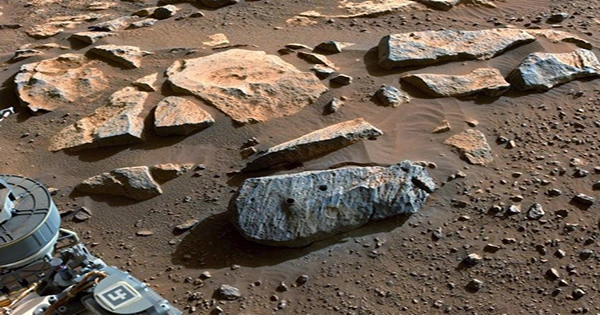The ancient river delta in Jezero Crater on Mars has been the focus of NASA’s Perseverance this summer, and it appears that it has struck gold. The team is in awe after a preliminary study of one of the rocks the rover collected revealed it has the highest concentration of organic compounds ever discovered on Mars.
Compounds known as organic molecules are generally carbon-based but frequently contain hydrogen, oxygen, and other elements. Both humans and every other living thing on our planet are made up of these molecules. They do not, however, only exist in life. They can be created using non-biological techniques.

Long ago, these organic molecules became caught in these rocks. Although water flowed on Mars billions of years ago (and possibly even more recently), the planet is presently dry and icy. A river carved a delta of mud and silt by pouring water into what is today known as the Jezero crater. The dry strata that were once mud are now being explored by Perseverance. On July 20, Perseverance scanned the “Wildcat Ridge” rock and discovered a large number of organic compounds.
According to Ken Farley, a scientist with the Perseverance project at Caltech, “in the distant past, the sand, mud, and salts that currently make up the Wildcat Ridge sample were deposited under conditions where life may have conceivably thrived.”
It’s significant that the organic material was discovered in a sedimentary rock that is known for holding onto remains of extinct Earth life. As capable as the sensors on Perseverance are, more information about what is in the Wildcat Ridge sample won’t be known until it is brought back to Earth for more thorough analysis as part of the agency’s Mars Sample Return effort.
The sample return mission is anticipated to take place sometime in the early 2030s and will likely involve several helicopters to help convey the valuable cargo.
















